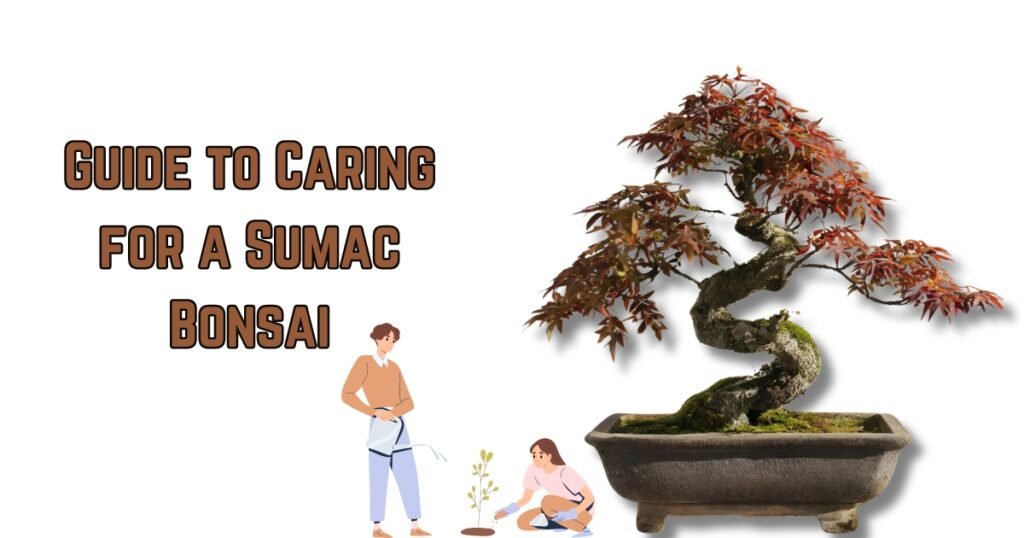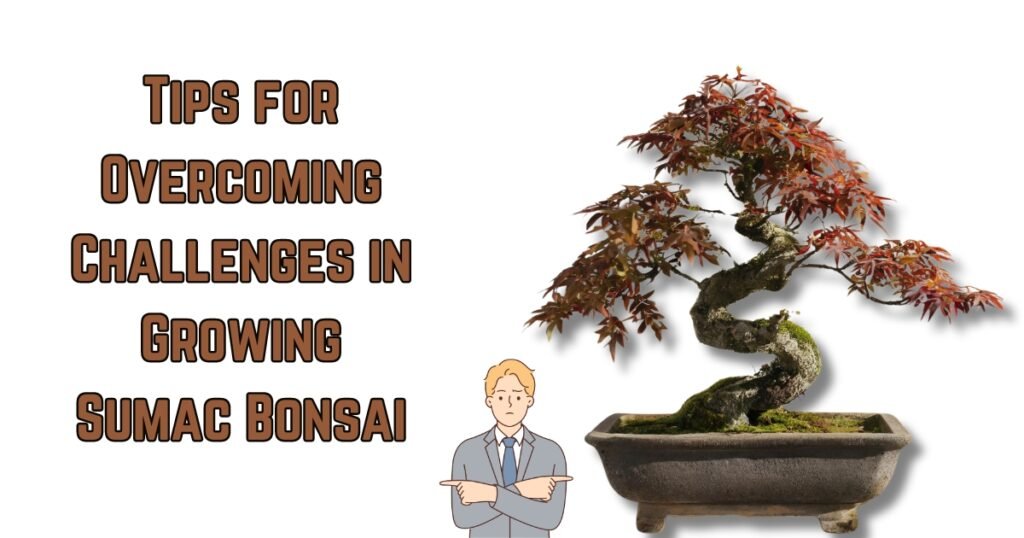General Information
Sumac plants are not typically used for bonsai but are an exciting challenge for enthusiasts. Sumac is a genus of flowering plants in the family Anacardiaceae, known scientifically as Rhus. This plant has spread worldwide, originating from Africa and North America. The species within this genus, such as the Staghorn Sumac, are hardy and can thrive in various climates, including Colorado, where they make great yard trees.
The use of Sumac for bonsai is a debatable topic among practitioners. While some believe its characteristics do not suit the traditional bonsai aesthetic, others suggest that its unique features, such as compound leaves and striking fall colors, can be visually appealing when shaped and maintained with bonsai techniques.
To create a Sumac bonsai, one needs patience and skill. The process involves pruning, wiring, and attentive care to ensure a healthy and aesthetically pleasing miniature tree. The Pacific Bonsai Museum has included a Staghorn Sumac in its collection since 1986, proving that Sumac can be transformed into a beautiful bonsai with the right expertise.
Sumac bonsai plants, seeds, and starters are available on online marketplaces like Amazon, Etsy, and eBay. They also offer Sumac berries that can be used to make pink lemonade.
Consider growing a Sumac bonsai for something unique and eye-catching in your collection. Their fast growth and unique features make them an excellent choice for both experienced bonsai artists and curious gardeners.
Choosing the Best Sumac Species for Bonsai: Characteristics and Species to Consider
To choose a Sumac species for bonsai, look for ideal characteristics for the art form. These include response to pruning, smaller leaf size, exciting bark, or unique growth habits. Here are some Sumac species that are typically suitable for bonsai:

Staghorn Sumac (Rhus typhina): The Staghorn Sumac is a popular bonsai species with hairy twigs resembling deer antlers. It produces vibrant orange to red foliage in the fall, handles heavy pruning well, and has a fast growth rate, making it ideal for bonsai training.
Smooth Sumac (Rhus glabra): It is commonly used in bonsai due to its red stems and soft leaves. It displays vibrant red autumn colors and is a resilient species that can thrive in various conditions, making it ideal for bonsai trees in different environments.
Dwarf Sumac (Rhus corallum ‘Lanham’s Purple’): This small cultivar can be used for bonsai.
Japanese Sumac (Rhus javanica): This species is recognized for its impressive fruit clusters and compound leaves like other sumacs, and it responds well to bonsai techniques.
Prairie Flameleaf Sumac (Rhus lanceolata): This sumac is drought-tolerant, native to Texas, and great for bonsai due to its smaller leaflets and size. It presents a beautiful fall color.
Fragrant Sumac (Rhus aromatica): This plant may not have the same autumn colors as Staghorn or Smooth Sumac, but its crushed leaves give off a pleasant citrus-like scent. It also has a shrub-like, lower-growing habit that is great for bonsai.
Sumacs can be challenging to cultivate as bonsai due to their large compound leaves, which may not reduce in size as much as other species. However, sumac bonsai can still be attractive with creative pruning and shaping.
Be mindful of invasive species and local regulations when selecting a sumac for bonsai. Remember that Rhus plants can cause allergic reactions like poison ivy, so handle them cautiously.
Guide to Caring for a Sumac Bonsai
To care for a Sumac bonsai, you must understand its natural growing habits and preferences. Follow this general guide to keep your Sumac bonsai healthy.

Watering
- Consistency: Water sumac bonsai regularly to keep the soil from drying out, but be careful not to waterlog it as this can cause root rot.
- Monitoring: In hot or windy weather, plants may need more water. So, check the soil moisture frequently.
- Method: Water your plants using a watering can or hose with a fine nozzle to prevent soil disturbance. Keep watering until the excess water drains out from the pot’s bottom.
Sunlight and Temperature
- Sunlight: Sumac bonsai needs 4-6 hours of direct sunlight daily. It can tolerate partial shade, but it thrives in full sunlight.
- Temperature: Protect Sumac bonsai from frost and extreme temperatures. In harsh conditions, provide winter protection or move the bonsai indoors to a well-lit, excellent space.
Fertilizing
- Timing: To keep your Sumac bonsai healthy, remember to fertilize it during the growing season, which usually falls between spring and summer.
- Frequency: Apply a balanced liquid bonsai fertilizer every 2-4 weeks.
- Strength: Follow recommended dilution rates or use half-strength for frequent feedings.
Pruning and Trimming
- Structural Pruning: Do it in late winter or early spring before new growth starts.
- Maintenance Pruning: Trim new shoots throughout the growing season to maintain shape and encourage growth.
- Leaf Pruning: Prune in early summer for smaller leaves and better tree appearance.
Repotting
- Frequency: Due to their fast growth rate, Sumac bonsai requires repotting every 2-3 years to replenish the soil and manage root growth.
- Timing: Repot in early spring before the growing season begins.
- Soil: To avoid root rot, use free-draining bonsai soil.
Pest and Disease Management
- Inspection: Check leaves, stems, and soil for pests or diseases.
- Treatment: To deal with common pests like aphids or spider mites, use neem oil or insecticidal soap as appropriate treatments.
Seasonal Care
- Autumn: To prepare your bonsai for winter, reduce watering and stop fertilization.
- Winter: Protect your bonsai from freezing temperatures in harsh winter climates.
For proper Sumac bonsai care, please pay attention to details and understand its seasonal needs. With good care, your bonsai will offer stunning fall foliage and an attractive structure all year round. Remember to adjust your care routine to match your specific climate.
Tips for Overcoming Challenges in Growing Sumac Bonsai
Growing Sumac bonsai can be challenging due to their small size and balancing aesthetics with plant health. Common issues include pests, root rot, and improper pruning. Here are some solutions to these challenges.

- Large Leaf Size
- Challenge: Sumac bonsai can be challenging to create due to the plant’s naturally large and complex leaves, making it hard to achieve the desired proportionate miniaturization.
- Solution: Regularly prune and pinch back new growth to achieve smaller leaves in sumacs for bonsai cultivation. Defoliating sumacs during the growing season can also promote the development of smaller leaves.
- Rapid Growth
- Challenge: Due to their fast growth rate, regular pruning is necessary for sumac trees to maintain their desired shape and size.
- Solution: To keep your bonsai healthy and in shape, regularly prune it and report it. Pruning will help maintain its shape and size, while repotting and root-pruning are essential for controlling its growth and size.
- Sensitivity to Pruning
- Challenge: Sumacs can attract pests or become diseased due to the heavy sap flow that occurs when they are pruned.
- Solution: Prune in late winter or early spring using sharp and clean tools to minimize sap flow and reduce the risk of infection.
- Invasiveness
- Challenge: Certain sumac species are invasive due to their aggressive root system.
- Solution: Remember to prune the roots regularly to control their growth when repotting. Before growing any potentially invasive species, check local regulations and consider their environmental impact.
- Pests and Diseases
- Challenge: Sumacs can suffer from insect infestations or fungal diseases.
- Solution: Inspect your bonsai regularly to catch problems early. Use organic or chemical treatments as needed. To prevent fungal infections, ensure the bonsai has good air circulation and dry the foliage.
- Autumn Leaf Drop
- Challenge: Sumacs drop their leaves in autumn, which can be unattractive during winter.
- Solution: To ensure vigorous growth in spring, accept that the tree’s seasonal cycle includes dormancy. Keep the tree healthy before dormancy.
- Allergic Reactions
- Challenge: Certain Sumac species’ sap can cause allergic reactions similar to that of poison ivy.
- Solution: Use gloves while handling or pruning the bonsai. After working with the plant, wash your hands and tools thoroughly.
- Winter Care
- Challenge: Freezing temperatures during winter can be harmful to Sumac bonsai.
- Solution: Move the bonsai to a sheltered location like a cold frame, unheated garage, or greenhouse for winter protection to avoid frost damage while allowing it to experience dormancy.
To grow a healthy and beautiful Sumac bonsai, solve the challenges. Bonsai takes time and effort, but overcoming challenges is part of the satisfying experience.
Conclusion
Sumac Bonsai is an excellent choice for bonsai enthusiasts. With regular pruning and careful watering, you can manage the challenges associated with its invasive nature and rapid growth. The benefits of nurturing a Sumac Bonsai far outweigh the challenges. Its striking autumn colors, elegant compound leaves, and natural beauty make it a stunning living art. Start with Sumac Bonsai today and experience bonsai cultivation’s enriching and fulfilling rewards.
(FAQs) about Sumac Bonsai
How often should I water my Sumac Bonsai?
Sumac prefers moist soil, but the watering frequency can depend on climate, season, and pot size. It’s best to check the soil moisture regularly and water when the top inch or so of the soil feels dry.
When should I prune my Sumac Bonsai?
Regular pruning is crucial for Sumac Bonsai to control its growth and maintain its shape. The best time for major pruning is late winter or early spring when the tree is still dormant. However, minor pruning can be done throughout the growing season.
Can I grow a Sumac Bonsai indoors?
Sumac is typically an outdoor plant, but it can be grown indoors with enough light. Place it near a window that gets plenty of sunlight. However, moving it outdoors during warmer months is a good idea.
Is Sumac Bonsai suitable for beginners?
Yes, Sumac Bonsai can be a good choice for beginners due to its robust growth and adaptability. However, its rapid growth rate requires more frequent care and attention than other types of bonsai.
What type of pot is best for Sumac Bonsai?
Choose a pot with good drainage to prevent waterlogging and root rot. The pot size should be proportionate to the size of the tree. Remember, as Sumac Bonsai snowballs, you may need to report it more frequently than other types of bonsai.
Further Reading and Resources
- Mastering the Art of Parsoni Juniper Bonsai: From Seedling to Showpiece
- The Charming Lemon Cypress Bonsai: A Comprehensive Guide
- The Exquisite Art of Growing Rainbow Eucalyptus Bonsai: A Comprehensive Guide
- Mastering the Art of Southern Magnolia Bonsai: A Comprehensive Guide
- Mastering the Art of Yoshino Cherry Bonsai: A Comprehensive Guide
- Mastering the Art of Cultivating Bodhi Tree Bonsai (Ficus Religiosa): A Comprehensive Guide
Other Sources
- Rhus – Sumac – Colorado Rocky Mountain Bonsai ↩ ↩2 ↩3 ↩4
- The style of this sumac tree is 100% unintentional ↩
- Sumac bonsai? ↩





